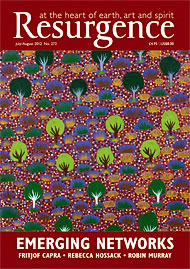Science is wonderful and necessary – one of the great creations of humankind. Most importantly, it helps us to see just how extraordinary life and the universe really are. At its best, science lives up to its own mythology: a disinterested, self-effacing search after truth, carried out by people of humility in true generosity of spirit. And as a fairly considerable bonus it has led us to a wide range of ‘high’ (science-based) technologies that improve many lives.
But alas, in large measure, science and the idea of it have been seriously corrupted. That some of these high technologies are not for the general good is all too obvious, and – in some ways even more serious – science all too often becomes the enemy of what it should stand for. Although it must have rules and methods – in particular, the ideas of science must be testable – it should be open-minded. It should go where the data leads. That’s what the myth says it does do – but the reality is very different.
In reality, science is locked into a series of dogmas that are largely untested and to some extent untestable – which for science ought to be the great no-no; yet they must be adhered to, or risk the charge of flakiness and loss of grant. In The Science Delusion, Rupert Sheldrake drags 10 of the most powerful dogmas out of the basement and into the light of day.
The most obvious and all-prevailing of the great dogmas is that the universe as a whole – including life – is mechanical. Bits of stuff interact and that’s it. The smaller the bits, the more fundamental the explanation is deemed to be. According to Richard Dawkins, human beings are “lumbering robots”, driven by their “selfish” DNA (where “selfish” is a shameless and seriously misleading piece of anthropomorphism). Consciousness, says Boston philosopher Dan Dennett, is an illusion – just the noise that neurons make – although it is hard to see how something that is not itself conscious could suffer from illusions. And on the back of this mechanical dogma all metaphysics, which in effect means all religion, is kicked into touch.
Yet, asks Sheldrake innocently, where is the evidence that life and all the universe are simply mechanical? What can the evidence possibly be? Common sense and common observation cry out at every turn that we and many other creatures at least are conscious, and that we have free will. Why reject our intuitions? On what grounds?
On a slightly more mundane level, it has been assumed at least since people started taking Gregor Mendel seriously that all inheritance of a lasting kind is conveyed by material means – notably by genes that are now known to be made of DNA. But is it really so? For the past 30 years, Sheldrake has championed the notion of morphic resonance. He builds at least by analogy on the concept of the physical field, as in magnetism and gravity, and argues that creatures resemble their ancestors largely because they are in tune with them, over space and over time. The idea sounds bizarre (and I cannot do it justice here), but again there are independent reasons to take it seriously – and this particular notion is testable, and Sheldrake has invested his own money in testing it. But when Sheldrake first introduced his idea in A New Science of Life, Nature magazine declared in a spirit that was all-too reflective of modern attitudes, that it was “a book fit for burning” (which actually did the book’s sales no end of good).
If Rupert Sheldrake were simply a commentator, sniping from a distance, his arguments might be swept aside. But he is a scientist himself, through and through: a botanist with a double first from Cambridge; a Fellowship at Clare; a Royal Society Fellowship; and for some years he was principal physiologist at the International Crops Research Institute for the Semi-Arid Tropics (ICRISAT) in Hyderabad, India, where he helped to develop new varieties of pulses, key sources of protein. He could, if he’d stayed on track, have been professor of this and director of that, on every high-flown committee. But he went from ICRISAT to an ashram, and instead began to take a bird’s-eye view.
He is a loss to research and particularly to agriculture but we should be grateful nonetheless for his change of course. Other philosophers, such as Bruno Latour, challenge the overall stance of science. Many bold scientists prod away at the premises of their own discipline. Very few are equipped to do as Sheldrake does and examine the deep roots in detail. But as the world plunges into crisis, and science – at least of particular kinds! – grows in influence and expense, such examination has become a matter of urgency.






